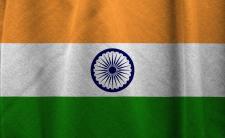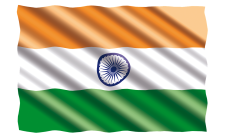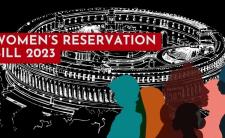The Republic of India is located in South Asia and bordered by Pakistan, China, Bangladesh, Myanmar, Nepal and Bhutan – all historically part of the Indian subcontinent or greater India. It is the world’s seventh largest country in terms of geographical size. It is also the world’s largest democracy demographically and the second most populous country after China. It is also a very diverse country with different cultures and religions mutually coexisting. Hindi and English are the official languages for federal business while the constitution recognizes the existence of many other languages.
Political system and history
Present day India is a federal state with 28 federated entities divided among seven unions. Its system of government is parliamentary and based on the Westminster model. India first came into contact with the west in the early 18th century when it was annexed by the British East India Company. In the mid 19th century, it fell under British colonial rule. The colonial administration in British India or British Raj – as it was also called - was headed by a Viceroy who also cumulated the title of Governor General until 1947 when a struggle for independence, marked by a widespread non violent resistance movement resulted in independence from the British Colonial Empire.
Constitutional history and development
Prior to the constituent assembly that convened in 1948 to draft the Indian constitution adopted in 1950 and still in force to date, the fundamental law of India was mostly embodied in a series of statutes enacted by the British Parliament. Key among them was the Government of India Acts of 1919 and 1935.
The Government of India Act of 1919
Passed as a measure of gratitude for India’s role in world war one, the primary purpose of this act was to expand native participation in the government. Key reforms of the Act were the establishment of a dual form of government with limited powers for the major provinces. The imperial legislative council was transformed into a bicameral legislature for all India. Finally, the Act established the position of a High Commissioner with residence in London to Represent India in the United Kingdom.
The Government of India Act of 1935
This Act was adopted in response to opposition and criticisms from the National Congress of India to the 1919 Act for doing too little in terms of granting autonomy. Its key provisions included:
- Abolition of the dual form of government or diarchy and the granting of a larger degree of autonomy for the provinces
- Establishment of a Federation of India (which never came into force though)
- Introduction of direct suffrage and extension of the franchise to 37 million people from the original 5 million
- Membership of the provincial assemblies was altered so as to include more elected Indian representatives, who were now able to form majorities and be appointed to form governments
- The establishment of a Federal Court
The Constituent Assembly of 1948 and the Constitution of 1950
In 1946, the British decided to examine the possibility of granting independence to India. As a result, a British cabinet mission was despatched to India to (1) hold discussions with the representatives of British India and the Indian States in order to agree on the framework for writing a constitution, and (2), set up a constituent body and an executive council. Following this mission and the ensuing negotiations, a Constituent Assembly was indirectly elected by the provincial legislatures comprising 278 representatives and 15 women. Parties represented in the CA were the Congress Party which had a majority, Muslim League, Scheduled Caste Federation, the Indian Communist Party and the Union Party. The CA met for the first time in December 1946 and by November 1949 the draft constitution was approved. The constitution went into effect in January 1950 and the CA was transformed into a Provisional Parliament.
The Constitution which is still in force has been amended over 90 times making it one of the most frequently amended constitutions in the world. It is also known to be one of the longest and most detailed in the world with 395 articles and 10 appendixes called schedules. Extensively modeled on western legal and constitutional practice, its key features include:
- The establishment of a federal system with residual powers in a central government
- A list of fundamental rights
- A Westminster style parliamentary system of government
Key timelines in the 1948 constitutional process
| 1946 | Britain decides on to grant independence to India and cabinet mission is dispatched to India to discuss modalities for transfer of power |
| 14 August 1947 | Proposal for creation of committees is tabled |
| 29 August 1947 | Drafting committee is established |
| 6 December 1947 | Constituent Assembly formally convenes for the first time, following elections, to start the process of writing a constitution. |
| 4 November 1947 | Draft is finalized and submitted |
| 1948 – 1949 | Constituent Assembly meets in sessions open to the public |
| 26 November 1949 | Constituent Assembly adopts final draft making it official |
| 26 January 1950 | Entry into force of the new constitution |
| Branch | Hierarchy | Powers | Removal |
|---|






Share this article